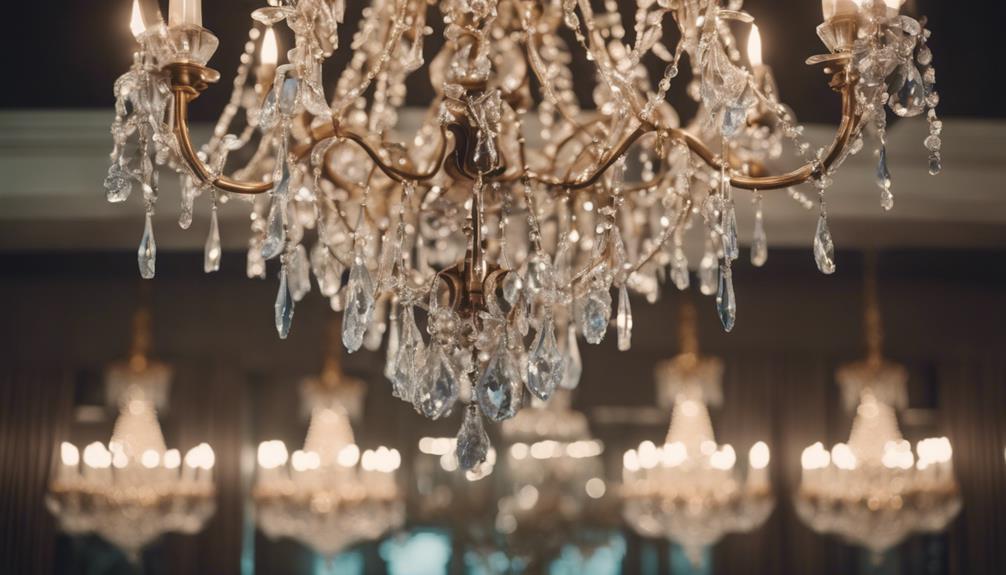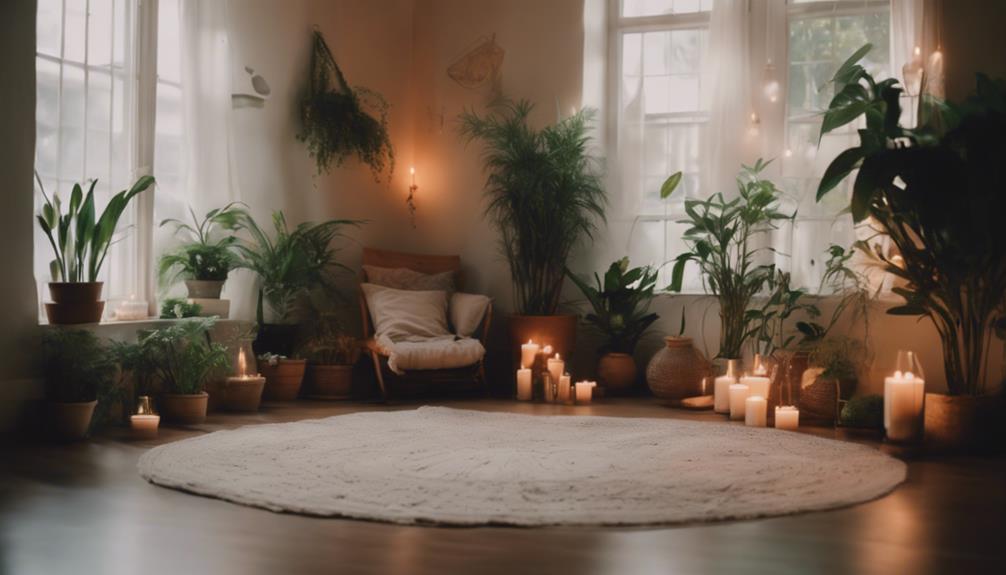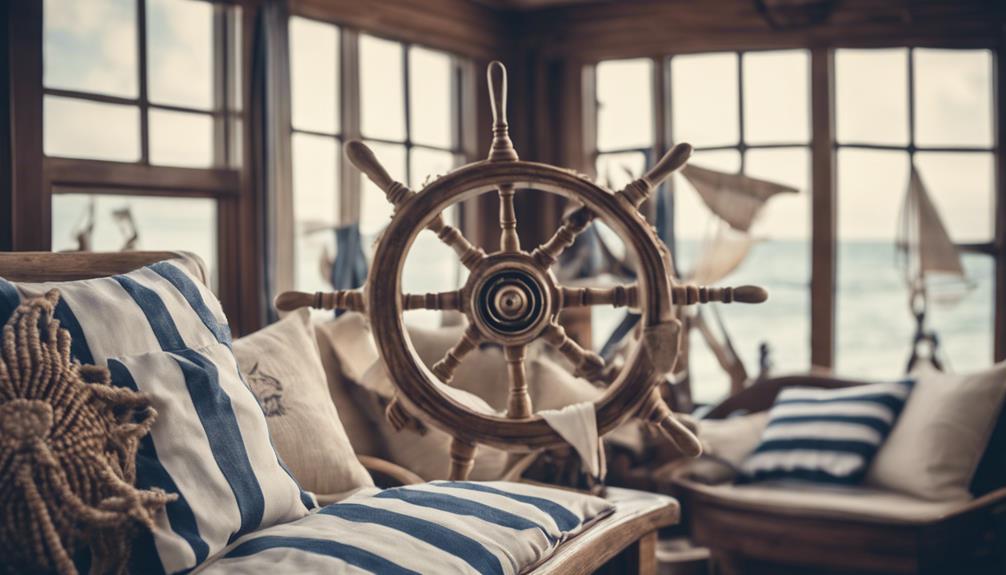Step into a world where design rules are meant to be broken. Embrace the eclectic style that mixes antique and contemporary elements for a visual feast. Create harmony through repeating colors and strategic focal points. Break free from tradition and embrace your unique individuality with a cohesive blend of styles and textures. Balance is key, so fearlessly mix colors and styles to craft a one-of-a-kind space. Discover how eclectic design rebels against norms, creating a personalized and inviting atmosphere that captivates. Explore the fusion of past and present for a bold and innovative approach to design.
Key Takeaways
- Embraces eclectic mix of antique and contemporary elements.
- Defies traditional norms with fearless color and texture combinations.
- Utilizes focal points strategically for visual interest.
- Harmoniously blends diverse styles, colors, and textures.
- Challenges conventional design rules for a unique and personalized space.
Celebrating Creative Expression
Embrace the vibrant essence of creative expression with the eclectic design style. In this design rebellion, you have the freedom to mix and match, infusing your space with personality and charm. Repeating colors play a pivotal role in this style, weaving a thread of harmony throughout the eclectic space. By intentionally blending antique and contemporary elements, you create a visual feast that breaks away from traditional norms.
Focal points serve as anchors in your design, drawing the eye and sparking interest. They interact with other elements in the space, creating a dynamic and engaging environment. Rhythm and repetition are your tools to establish flow, guiding the eye seamlessly from one area to another.
Through unity in diversity, you craft a space that's uniquely yours, a true reflection of your individuality and creativity. Let the eclectic design style be your canvas for boundless expression and design freedom.
The Essence of Eclectic Design

Infusing your space with a vibrant mix of colors, textures, and styles, eclectic design makes a bold statement through intentional combinations. In an eclectic space, the magic happens when you start mixing and matching elements that wouldn't traditionally go together.
Here's what defines the essence of eclectic design:
- Diverse Elements: The heart of eclectic design lies in the ability to blend antique and contemporary pieces seamlessly, creating a visually stimulating environment that exudes personality.
- Visual Weight: Understanding how to distribute visual weight is critical. By strategically placing focal points and balancing them with other elements, you can achieve a harmonious look in your eclectic space.
- Balance and Harmony: Achieving equilibrium in an eclectic design is all about finding the right balance between contrasting elements. It's about breaking the rules while still maintaining a sense of visual cohesion.
- Unity in Diversity: Embracing the concept of unity in diversity allows for a unique blend of old and new, resulting in a personalized space that defies traditional design conventions.
Crafting Visual Harmony

To achieve visual harmony in eclectic design, focus on crafting a cohesive blend of styles, colors, and textures that work together seamlessly.
In eclectic design, color is a powerful tool to tie diverse elements together. By selecting a harmonious color palette that complements the various styles present in the space, you can create a unified look.
Incorporating texture adds depth and interest to the design, enhancing visual harmony. Mixing different textures such as smooth leather, plush velvet, and rough wood can bring a dynamic quality to the space. Ensuring a balance of textures throughout the room contributes to a cohesive and inviting atmosphere.
Visual harmony in eclectic design is about finding the right balance between contrasting elements while maintaining an overall sense of unity. By carefully considering color choices and incorporating a variety of textures, you can create a visually appealing space that reflects your unique style.
Mastering Design Elements

Achieving mastery in eclectic design involves skillfully integrating a diverse range of design elements to create a cohesive and visually enchanting space. The key to mastering design elements in an eclectic setting lies in understanding how to harmoniously blend various components to achieve a unique and alluring look.
To excel in this area, consider the following:
- Mix Colors, Textures, and Styles: Embrace the eclectic nature of design by fearlessly combining different colors, textures, and styles to add depth and visual interest to your space.
- Balance Antique and Contemporary Elements: Create a harmonious design by intentionally incorporating both antique and contemporary pieces, striking a balance between the old and the new.
- Utilize Focal Points: Use focal points strategically to anchor the design and draw attention, ensuring that they interact seamlessly with other elements in the space.
- Embrace Rhythm and Repetition: Establish a sense of flow in your eclectic design by incorporating rhythm and repetition, weaving thematic threads throughout the space for a cohesive look.
Case Studies and Applications

You can explore the transformative power of eclectic design through real-life examples in case studies.
These applications showcase the evolution of eclectic style and its impact on various spaces, from residential homes to commercial settings.
Design Impact Showcase
In real-world examples, eclectic design's impact shines through in diverse case studies and practical applications. Accessories, colors, shapes, and materials all play significant roles in creating visually engaging and harmonious spaces.
Here are four key elements showcasing the design impact of eclectic style:
- Successful Integration: Case studies demonstrate how eclectic elements can shine in both residential and commercial spaces, blending seamlessly with various design aesthetics.
- Personal Expression: Accessories are pivotal in eclectic design, allowing for unique personal expression and adding layers of visual interest to a room.
- Contrast Creation: Juxtaposition is key in eclectic design, as intentional pairing of unexpected elements creates contrast that fascinates viewers and adds depth to the space.
- Visual Continuity: Recurring motifs like common colors, shapes, or materials tie eclectic rooms together, ensuring visual continuity and a sense of cohesion throughout the design.
Eclectic Style Evolution
Discover how eclectic design has evolved through real-world case studies and practical applications, showcasing the successful integration of diverse elements and the freedom for unmatched creativity. By examining vintage finds, design styles, and modern design, you can witness the transformation of eclectic style into a harmonious blend of old and new.
In the case of vintage finds, incorporating unique pieces from different eras adds character and history to a space, creating a sense of timelessness. When it comes to design styles, mixing and matching elements from various aesthetics like minimalist, bohemian, or industrial can result in a visually stimulating and personalized environment.
Additionally, integrating modern design aspects such as sleek furniture or contemporary art pieces can bring a fresh and current touch to eclectic spaces. Through these examples, it becomes evident that eclectic style evolution is about embracing diversity, experimenting with contrasts, and ultimately crafting a space that reflects your individuality and design sensibilities.
Influential Graphic Designers

Breaking every rule in the book, influential graphic designers have left an indelible mark on the field through their innovative approaches and boundary-pushing creations. These designers have reshaped the landscape of graphic design, challenging traditional norms and paving the way for new possibilities.
Here are a few standout figures who've notably influenced the industry:
- Wolfgang Weingart: Pioneer of New Wave Typography, Weingart disrupted the design world in the 1970s by breaking away from grid-based layouts, introducing a more dynamic and experimental approach to typography.
- Barbara Stauffacher Solomon: Renowned for her use of supergraphics in interior design, Solomon transformed spaces with vibrant colors and bold geometric patterns, bringing a fresh perspective to the relationship between graphic design and architecture.
- April Greiman: A trailblazer in typographic design, Greiman embraced white space and early computer technology to create visually striking and innovative compositions that pushed the boundaries of traditional design.
- Dan Friedman: Known for promoting radical modernism and innovative forms in graphic design, Friedman challenged typographic conventions, leaving a lasting impact on the field with his avant-garde creations.
Evolution of Design Movements

You're about to explore the dynamic evolution of design movements, witnessing the progression in styles and approaches throughout history.
From the emergence of Postmodernism challenging traditional norms to the bold experimentation of Supergraphics and New Wave Typography, each movement has left its unique mark on the design landscape.
Get ready to uncover how these rebellious movements have shaped the eclectic style that defies conventional design rules.
Design Movement Evolution
During the mid-20th century, design movements underwent significant evolution, challenging established norms and embracing new aesthetic possibilities. This specific era saw the rise of eclectic designs that combined elements from various styles to create a sense of visual diversity and innovation.
Here are four significant shifts that marked the evolution of design movements during this period:
- Postmodernism: Emerging in the 1970s, postmodernism rebelled against the declining modern aesthetic, questioning traditional design norms and introducing a more playful and eclectic approach.
- Supermannerism: Architects like Robert Venturi led the supermannerism movement in architecture, embracing changes in scale and context to create visually striking and unconventional structures.
- Supergraphics: Popular in the late 1960s, supergraphics utilized large-scale environmental graphics with bold shapes and colors, adding a dynamic and impactful visual element to various spaces.
- New Wave Typography: Developed by Wolfgang Weingart, new wave typography defied grid-based conventions and drew inspiration from postmodern language theory, resulting in experimental and unconventional typographic compositions.
Progression in Design
The evolution of design movements showcases a dynamic progression in aesthetic approaches and creative boundaries. From the bold and eclectic designs of Postmodernism to the innovative concepts of Supermannerism, design has continuously pushed the limits of tradition.
New Wave Typography revolutionized typographic communication by defying conventional grid-based arrangements, while Memphis Style introduced exaggerated geometric forms and vibrant colors into living spaces. The infusion of neutral tones with avant-garde furniture pieces challenges the status quo, creating a harmonious blend of old and new.
As designers like Neville Brody and April Greiman embraced casual postmodern vibrancy while maintaining typographic clarity, the design landscape evolved into a world of endless possibilities. Each movement, from its inception in the 1970s to the present day, has contributed to the rich tapestry of design history, shaping the way we perceive and interact with our environments.
Embracing this progression allows for a deeper understanding of the role design plays in our lives, inspiring creativity and innovation in every aspect of our surroundings.
Typography and Innovations

Innovative typographic approaches have played a pivotal role in shaping the eclectic rebellion of design styles within the industry. These fresh perspectives haven't only challenged traditional norms but also opened new avenues for creativity and expression.
Here are some key insights into the typography and innovations driving this design revolution:
- New Wave Typography, as pioneered by Wolfgang Weingart, shattered grid-based arrangement conventions, pushing the boundaries to expand typographic communication beyond known limits.
- Louise Fili's Retro Design Style found inspiration in vernacular graphics from France and Italy, specializing in crafting unique identities for restaurants and food packaging, adding a touch of nostalgia to modern design.
- Charles S. Anderson's Nostalgic Revivals in Graphic Design breathed new life into historical graphic arts, blending vernacular elements with modernistic styles to create a bridge between the past and present.
- Odermatt and Tissi's design approach, influenced by writing and offset printing techniques, maintained an objective yet innovative style that set new standards for clarity and creativity in typography.
Frequently Asked Questions
What Is Eclectic Interior Design?
Eclectic interior design is about blending various styles, colors, and textures to create a unique and personalized space. It involves mixing antique with contemporary elements, allowing for personal expression and celebrating diversity in design.
What Is Art Nouveau Interior Design?
Art Nouveau interior design emerged in the late 19th century as a reaction against academic art. It features organic forms, curved lines, and nature-inspired motifs. This style emphasizes craftsmanship and intricate decorative elements, seen in architecture and decorative arts.
What Is Contemporary Interior Design Style?
Contemporary interior design style combines clean lines, neutral colors, and modern elements for a sleek look. Imagine a living room with a minimalist sofa, geometric rug, and statement lighting. It's all about creating a sophisticated, open space.
Conclusion
You've learned how eclectic design is shaking up the industry, combining bold elements to create visual masterpieces.
Did you know that 63% of consumers prefer brands that showcase unique design styles?
Embrace the rebellion, break the rules, and let your creativity shine! Join the movement and make a statement with your designs.
The possibilities are endless when you think outside the box.










